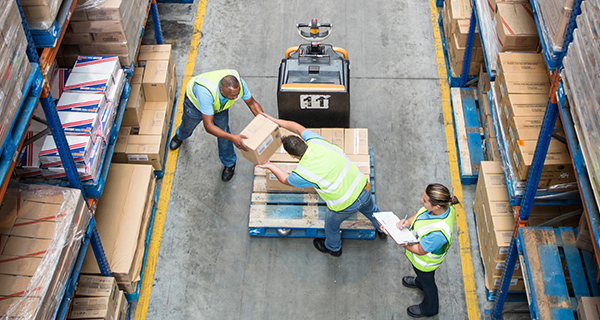Real-time location systems (RTLS) have become an essential component of modern warehouse management systems. These systems allow businesses to track the location of assets, people, and equipment in real-time, improving operational efficiency and reducing costs. In this article, we’ll explore the role of RTLS in warehouse management and how it can help businesses to optimize their operations.
What is a Real-Time Location System (RTLS)?
Real-time location systems (RTLS) are used to track and monitor the location of people, assets, and equipment within a warehouse or other facility. These systems use various technologies such as RFID, Bluetooth, GPS, and Wi-Fi to provide real-time information about the location of assets. RTLS can also provide information about the movement and condition of assets, allowing businesses to monitor their operations and improve efficiency.
The Role of RTLS in Warehouse Management
Warehouse management is a complex process that requires careful coordination of resources and assets. RTLS can play a critical role in helping businesses to optimize their warehouse operations by providing real-time information about the location and condition of assets. Here are some ways in which RTLS can be used in warehouse management:
- Asset Tracking
One of the most important uses of RTLS in warehouse management is asset tracking. With an RTLS system, businesses can track the location of assets such as pallets, containers, and equipment in real-time. This information can be used to optimize the movement of assets within the warehouse, reducing the time and effort required to locate them.
2. Inventory Management
RTLS can also be used for inventory management. With an RTLS system, businesses can track the movement of inventory within the warehouse, allowing them to optimize storage locations and reduce the time and effort required to locate items. This can help to improve inventory accuracy and reduce the risk of stockouts.
3. Safety and Security
RTLS can also be used to improve safety and security within the warehouse. By tracking the location of people and equipment, businesses can ensure that safety protocols are being followed and that equipment is being used in a safe and appropriate manner. RTLS can also be used to monitor access to restricted areas and to detect unauthorized entry.
4. Process Optimization
RTLS can be used to optimize warehouse processes by providing real-time information about the location and movement of assets. This information can be used to identify bottlenecks in the process and to optimize the movement of assets within the warehouse. By optimizing processes, businesses can reduce costs and improve operational efficiency.
5. Quality Control
RTLS can also be used for quality control purposes. By tracking the location and movement of assets, businesses can ensure that products are being handled and stored in a safe and appropriate manner. This can help to reduce the risk of damage or spoilage and ensure that products meet the required quality standards.
Conclusion
In conclusion, real-time location systems (RTLS) have become an essential component of modern warehouse management systems. These systems provide businesses with real-time information about the location and condition of assets, allowing them to optimize their operations and reduce costs. With the benefits of RTLS becoming more widely recognized, it is likely that we will see an increasing adoption of these systems in the coming years. If you are looking to optimize your warehouse operations, RTLS is certainly worth considering.





Leave a Reply